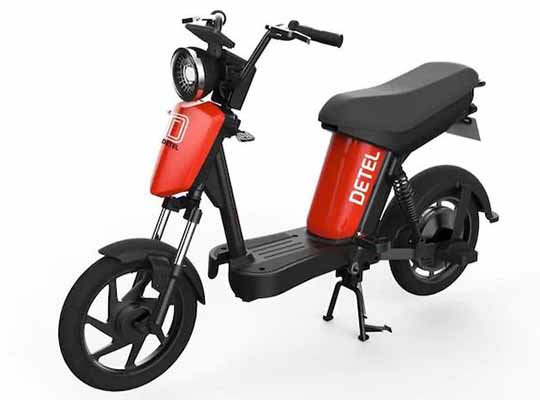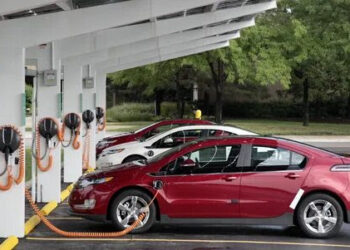The E-Bike Market Size, Growth driven by increasing demand for bike-sharing services, growing adoption of e-bikes for reducing traffic congestion. The lithium-ion segment dominates the market heavily and is expected to dominate the market during 2019-2027. APAC led the landing global market with more than 70.3% share, followed by Europe and North America region.
NEW YORK — According to the new market research report “E-Bike Market to 2027 – Global Analysis and Forecast by Battery Type (Lithium-Ion, Lithium-Ion Polymer, Lead Acid); Motor Type (Hub Motor, Mid Motor); Class (Class-I, Class-II, Class-III); Mode (Pedal Assist Mode, Throttle Mode)”, published by The Insight Partners, the global e-bike market accounted to US$ 35,862.5 Mn in 2018 and is expected to grow at a CAGR of 23.6% during the forecast period 2019 – 2027, to account to US$ 224,014.2 Mn by 2027.
| Report Coverage | Details |
| Market Size Value in | US$ 35,862.5 Million in 2018 |
| Market Size Value by | US$ 224,014.2 Million by 2027 |
| Growth rate | CAGR of 23.6% from 2019-2027 |
| Forecast Period | 2019-2027 |
| Base Year | 2019 |
| No. of Pages | 165 |
| No. Tables | 112 |
| No. of Charts & Figures | 84 |
| Historical data available | Yes |
| Segments covered | Battery Type; Motor Type; Class; Mode |
| Regional scope | North America; Europe; Asia Pacific; Latin America; MEA |
| Country scope | US, UK, Canada, Germany, France, Italy, Australia, Russia, China, Japan, South Korea, Saudi Arabia, Brazil, Argentina |
| Report coverage | Revenue forecast, company ranking, competitive landscape, growth factors, and trends |
E-Bike Market: Competitive Landscape and Key Developments
Haibike; Aventon Bikes; Giant Bicycles; Merida Industry Co., Ltd.; Pedego Electric Bikes; Robert Bosch GmbH; Specialized Bicycle Components, Inc.; Shimano Inc.; Trek Bicycle Corporation; and Yamaha Motor Co., Ltd. are among the key players in the global e-bike. The leading companies focus on the expansion and diversification of their market presence, and acquisition of new customer base, thereby tapping prevailing business opportunities.
In 2020, Merida has completed its ebike line by adding two new aluminium models- eOne-Sixty and eOne-Forty limited. These two e-bikes provide the rider with the company’s integrated battery system at a more reasonable price.
In 2019, Shimano opened an experience-based facility that focuses on fishing, cycling, and rowing. It also aims to target areas where the company’s advanced technologies can be touched physically and thus has opened within a “PAR’ COURSE” commercial facility.
The continuous boost in the adoption of electric vehicles is observed across the US, China, Germany, and many other developed countries globally. The governments across the world have introduced several incentives for vehicle owners to increase the adoption of e-bikes with a strong focus on environmental concerns. Moreover, with the increasing investment of governments and manufacturers toward the adoption of e-bikes, traffic congestion can be minimized. It can help in promoting exercise to the masses, as well as reduce vehicle emissions. Traveling by e-bikes makes daily commute less stressful and cheaper. As per the Center for Research into Energy Demand Solutions (CREDS) study, it has been found that e-bikes are proved to be better means of transportation than electric cars as it improves health and lifestyles.
As per the data given in the Inrix Global Traffic Scorecard in 2018, 60 urban areas in the US are considered among the most traffic congested cities, wherein the repercussions of traffic congestion cost billions of dollars each year to the Americans. Also, the increasing demand for bike-sharing services is propelling the growth of the e-bike market across the world. Thus, bike-sharing services are expected to create huge opportunities for the growth of the e-bike market during the forecast period.
Several Government Initiatives to Reduce Emission Level Globally:
Conventional vehicles use fossil fuels and emit greenhouse gas (GHG), an environment deterrent. Growing environmental concerns due to GHG emissions across the world have compelled governments and automotive manufacturers to focus on introducing electric vehicles, including e-bikes. Fuel-based vehicles can be rightly substituted with electric vehicles such as battery electric vehicles (BEVs). The growing implementation of environmental pollution laws and regulations, and the rising awareness of a clean environment among the masses and end users are predicted to procure e-bikes integrated with advanced technologies. Zero Emission Vehicle (ZEVs) initiative, Road to Zero Strategy, and Dubai Carbon Abatement Strategy are among a few initiatives toward controlling environmental pollution and enhancing the adoption of electric vehicles globally.
E-Bike market: Battery Type
The global e-bike, based on battery type, is segmented into lead acid, lithium-ion, and lithium-ion polymer. The lithium-ion segment held the largest market share in 2019. The adoption of lithium-ion batteries is high in automotive and consumer electronics industries. Higher energy efficiency and extended battery life are among the major advantages that contribute to its wide adoption. E-bike manufacturers have undertaken several initiatives to boost the adoption across developing countries such as India. In 2016, Hero Electric introduced vehicles powered with lithium-ion batteries. The company has approached logistics service providers in India to replace petrol bikes with their new lithium-ion battery-powered vehicles.













